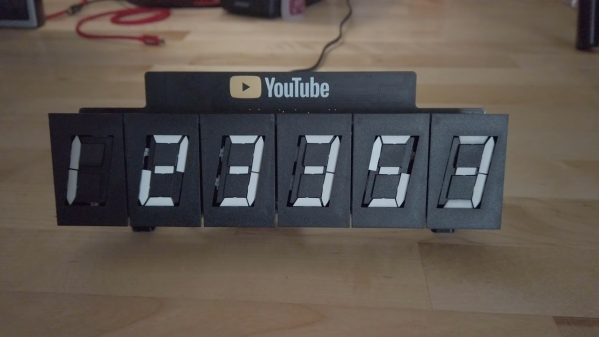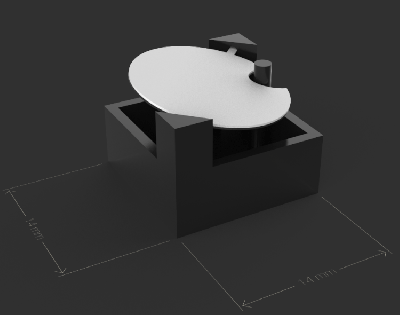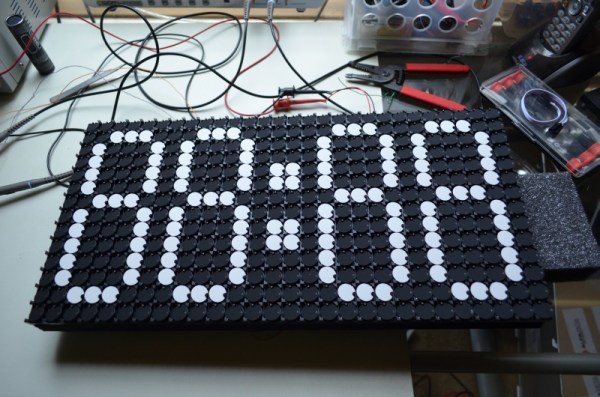Acquiring a new YouTube subscriber is a blessed event that deserves far more fanfare than a phone notification. But maybe blinkenlights don’t really do it for you anymore, or you simply prefer to be soothed sonically rather than visually. Well, what could be more satisfying than the crisp clack of an electromechanical 7-segment display? Six of them, of course. These things look great, they sound great, and once they’re set, they don’t need power to stay that way.
These displays switch between black and white by reversing current flow through their electromagnets, so [Zack] turned to the H-bridge in order to use them with DC. One H-bridge for each segment of six displays adds up fast, though. To get around this, [Zack] tied one pole of each electromagnet together for a common signal input, and used the other pole to control each segment individually. Then, he was able to tie all the A segments together, all the B segments, and so on, and only needs 13 H-bridges to do it all.
There was just one thing [Zack] didn’t count on. Once he got the board soldered up and running, the displays started acting funny. The low impedance of the coils was causing them to influence each other over the common path, so he added diode arrays to keep them in line.
[Zack]’s using an ESP32 to get the 411 through the Google API, and four octal serial switches to drive the displays. Even more satisfying than all those clacks is the displays’ operational economy baked into [Zack]’s code—as they count up, any segments common to the first digit and the next digit remain on. Increment your way past the break to check out the build video.
Not focused on numbers, but still want to celebrate each new sub? Try a dancing robot or a Tetris twist.
Continue reading “Electromechanical YouTube Sub Counter Trades Clicks For Clacks”



 Breakfast, a Brooklyn-based hardware firm known for creative marketing installations, unveiled their
Breakfast, a Brooklyn-based hardware firm known for creative marketing installations, unveiled their 










